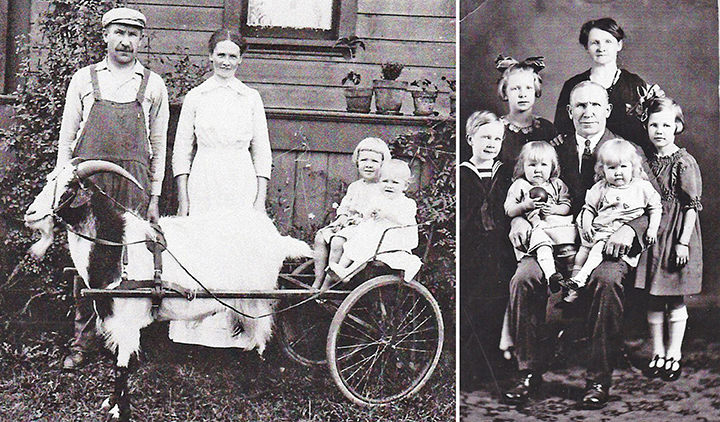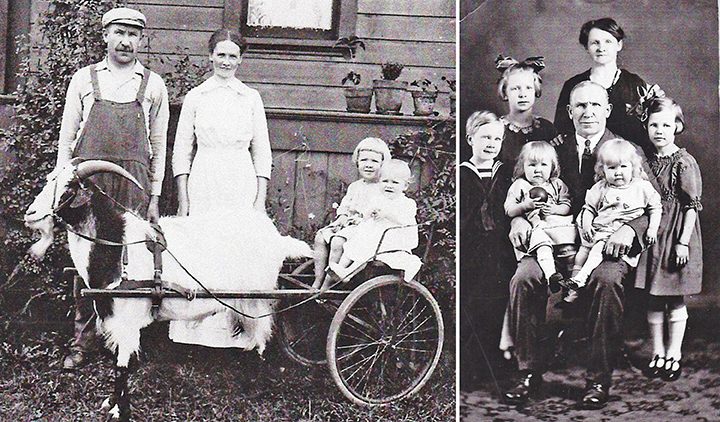
For my 175th column, I am taking the liberty of writing not about where I went but from where I came. The story is not important because it is unusual, but because it is not.
I found these pictures among a collection of family photographs and other items I inherited from my mother. The adults are my grandparents, who came to the United States from Sweden in 1913 with a baby, seeking a better life. The picture on the left was taken in 1915, after they had settled in Portland, Ore., and had another child. The picture on the right was taken in 1923, three children later. The twin on the right is my mother.
No more than 10 years off the boat, my Swedish grandparents had become Americans. My grandfather shaved his mustache, shined his shoes and bought a suit. My grandmother cut her hair, parted it on the side, and dropped her neckline. They dressed their only son in a sailor suit. Language did not make my grandparents Americans. They spoke only Swedish at home and my mother learned English in school. Because of a hearing problem, my grandmother never learned English well enough to become a citizen. What made my grandparents Americans was confidence that their children would have it easier than they did and that education and hard work would make it so. Among my mother’s treasures was a newspaper clipping from 1930 showing the three youngest children depositing 50 cents into a bank account.
The descendants of the people in these pictures, now all gone, include hard-working moms and dads, teachers, engineers, members of the military, business people, doctors, lawyers and loving grandparents. Many Americans share similar stories. We all share the responsibility of assuring that a hundred years from now Americans still be telling them.



